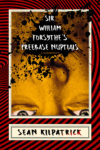
[Farrar, Straus, and Giroux; 2020]
“Sometimes comes the surprise of another day…” – Playhouse, from The Dominant Animal
In his essay, On Defamiliarization, Charles Baxter distinguishes a literature that embraces “the pleasures of recognition” from that which functions by “derangements of meaning.” When truth ceases to be enough to move the reader, novelty is demanded in an attempt to keep characters and objects from submitting to “ready-made symbolization.” The temptation for the fiction writer is to employ these ready-made symbols in an attempt to confer meaning upon their fiction. The attempt, however, is thwarted, if those symbols are overfamiliar, easily bypassed. Innovative fiction is perpetually occupied with the relationship between meaning-making, symbolization, and familiarity. In her debut story collection, Kathryn Scanlan’s short, experimental fictions decontextualize, shock, and remain linguistically inventive in an attempt to achieve the sort of defamiliarization Baxter explores in his essay.
The Dominant Animal, follows last year’s publication of Aug 9 — Fog, a work of collage that put the author in position of curator, demonstrating Scanlan’s ear for the quirks of language as she pieced together excerpts from an octogenarian’s diary.
Scanlan’s attention to the minutiae of the sentence is immediately apparent in her short, experimental fictions. The wiry language is textured and cutting. In an essay on craft published in Granta (2018), Scanlan describes the role of the sentence in her work as “unbudging,” something as “fully itself as some object sitting on a shelf.” The precision in Scanlan’s prose renders her objects alien and strange, and the strangeness opens them up to greater scrutiny.
I’ve courted in the traditional fashion, of course — coming together on evenings arranged in advance, in the dark, on padded seats, facing the brash rectangle, or else in simulated candlelight with knees beneath a drooping white cloth, enduring a protracted session of mastication and, later, abbreviated fornication.
It is the language of Scanlan’s stories that lends them their arresting particularity, but they are not mere language exercises. The stories are short, few carrying on longer than three pages, some only a paragraph, and they are dominated by what Gerard Manley Hopkins calls, “widowed images,” images which become memorable precisely because they have been divorced from some crucial part of their meaning. These widowed images, shaped by Scanlan’s markedly unique prose, often come together to create something abrasive, unexpected, and shocking. “Years ago,” she writes in the titular story, “I had two dogs, one large and one small, and one day the large one killed the small one, though it took the small one a day or so to die.” In her story, The Candidate, she turns an otherwise banal description of a meal to a haunting evocation: “steamed leaves and heads in a large metal pot. The breast of a bird — split, skinned — turned slowly in the dim yellow theater of the microwave oven.”
Scanlan writes with discretion, offering biography selectively, developing a tone of menace and mystery. Though the stories are so short, they often encompass full lives in miniature or else a character’s history and present circumstances collided and crumpled together. Often the most demanding puzzle in the story is the obscured protagonist. The stories are situations framing the lives of enigmatic central figures (frequently the unnamed narrator). These mysterious characters demand themselves from the margins, insisting on being heard; the more they are backgrounded, the greater their demand is felt.
Scanlan’s characters are outsiders looking in on foreign worlds. That being said, they lack the bravado and gritty determination common to the literary outsider. They are aware of their insecurities, writing frankly of their shortcomings, particularly their inability to find a way inside. They are funny and wry, but ultimately the central anxieties which bind them are the anxieties that bind the collection as a whole: a sense of entrapment and shame. The shame these characters feel arises from poverty, from the effects of chauvinism, from complicated romances, childhood traumas, abuse, and death. Though the character is typically aware of a baselessness to their shame, this awareness does nothing to alleviate the visceral impact. Entrapped and internally bound, her protagonists embrace their paralysis, allowing them to assess the world soberly, with precision and honesty. It is as if they gain confidence in recounting their stories; through the use of language, they learn to harness their peculiarity and weaponize it.
Gary Lutz in his essay, The Sentence is a Lonely Place, describes a lineage of writers that an artist like Scanlan obviously belongs to.
Virtually every sentence had the force and feel of a climax, in which almost every sentence was a vivid extremity of language, an abruption, a definitive inquietude…writers who recognized the sentence as the one true theater of endeavor, as the place where writing comes to a point and attains its ultimacy.
Scanlan’s stories of defamiliarized people, places, and actions are a part of this extended lineage, a literature of the object. She is a writer who disposes of the forest for the trees. She rejects a predominant way of seeing which is not really seeing, but merely categorizing — a way of seeing that reduces the parts to the whole. Scanlan offers a corrective by elevating the parts above the whole, the world collapsed into its most mundane moments, the commonplace interrogated. By making the ordinary alien, by peculiarizing it, the object is not distanced, but we are brought nearer to it.
The sun made its arc overhead. It came red through our eyelids and sucked us dry. On the shore, we tried to lie still but the creep of our skin — from the legs of insects or their mouths, probing, or the shrinking twitch of our limbs, burning — jostled us until we sat up in groggy irritation. We shielded our eyes. The lake was brown and warm as piss though it glittered coolly, bluely.
Scanlan hones in on a memory using the language of memory: the feeling of insects crawling across limbs, the brightness of the day and the water warmed by the sun — these and other moments within a moment. What often appears as the muddled, fumbling fingers of selective memory, she restores to the clarity of epiphany. Seemingly inconsequential images arise from the broader drama and contain within themselves the whole of the drama.
Scanlan’s sentences, her characters, and her situations disrupt the world by holding it still. In an age of ever-increasing activity, with the deification of efficiency and progress, it is difficult to see anything without seeing everything, and everything is too much to really see. We are all the more at the mercy of writers like Scanlan who provide new ways of seeing what has already been seen.
Stephen Mortland is a writer living in Indiana. His reviews have been published in Full Stop, Entropy, and Necessary Fiction. His fiction can be found in New York Tyrant magazine and Noon Annual.
This post may contain affiliate links.







